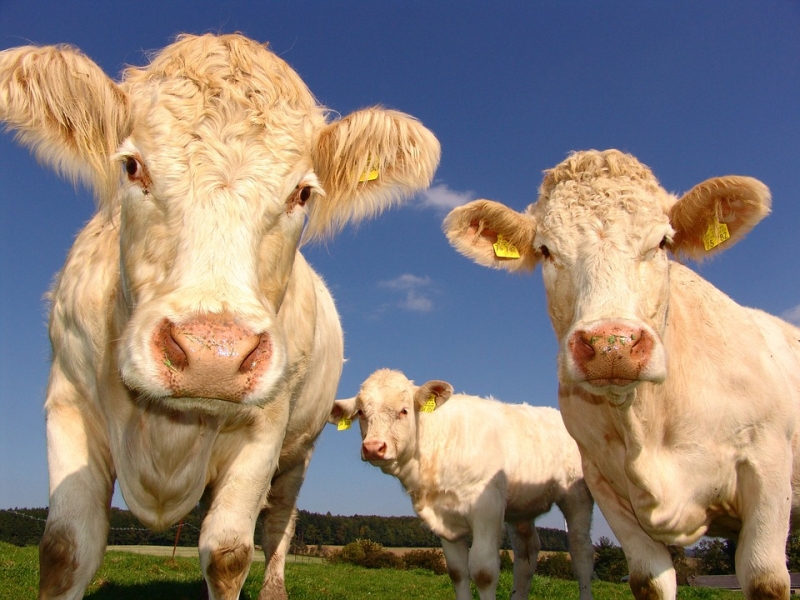Does “meat” have to come from a living, breathing animal? According to proponents of cellular agriculture, this may not always be the case. This new industry aims to produce “meat” by growing animal cells outside of a living body, envisioning a future where humans can consume beef, pork, chicken, and seafood without having to slaughter a single animal. The process of producing such cell-based food involves taking cells from a live animal and using a growth medium to grow the cells into large, edible tissue. In recent years, this technology has generated public excitement, attention, and, most importantly, investment. However, regardless of what the products of cellular agriculture look like or when this technology will be fully developed, naming this product is much more complicated.
 “Lab-grown meat,” “cultured tissue,” “cellular agriculture”—why do these names matter? Branding is critical in determining consumers’ reactions and willingness to accept products, especially if it involves new and unfamiliar technology. A 2017 study highlights this fact, finding that the term “cultured meat” provoked negative reactions from participants, as they associated it with being unnatural. They strongly preferred the terminology “clean meat.” A 2018 report found that one-half of the participants preferred the product labeled as “meat, but accompanied by an explanation about how it is produced.” These studies show consumers accept the idea that the products are “meat,” but the question of how to label them remains. The Good Food Institute, a nonprofit that promotes alternatives to conventional animal agriculture, uses the term “clean meat,” but this has attracted opposition from industry. The National Cattlemen’s Beef Association has deemed this label offensive, as it implies that conventional meat is “dirty.”
“Lab-grown meat,” “cultured tissue,” “cellular agriculture”—why do these names matter? Branding is critical in determining consumers’ reactions and willingness to accept products, especially if it involves new and unfamiliar technology. A 2017 study highlights this fact, finding that the term “cultured meat” provoked negative reactions from participants, as they associated it with being unnatural. They strongly preferred the terminology “clean meat.” A 2018 report found that one-half of the participants preferred the product labeled as “meat, but accompanied by an explanation about how it is produced.” These studies show consumers accept the idea that the products are “meat,” but the question of how to label them remains. The Good Food Institute, a nonprofit that promotes alternatives to conventional animal agriculture, uses the term “clean meat,” but this has attracted opposition from industry. The National Cattlemen’s Beef Association has deemed this label offensive, as it implies that conventional meat is “dirty.”
Some groups and local governments have rejected the label of “meat” entirely for cellular agriculture products. The U.S. Cattlemen’s Association claims that the meat label will “mislead and confuse consumers.” Some meat scientists point out that since most procedures are not disclosed due to intellectual property barriers, and because there are no products out on the market yet, further scientific evidence is needed to conclude whether this product is actually “meat.” Cattle farmers representing the South Dakota Farmers Union reject the label for a different reason, claiming “the term meat is our brand” and that cellular agriculture takes advantage of the system by “[marketing] on the reputation which [farmers] have spent generations to create.” In response to this opposition, Missouri was the first state to pass a law banning cellular agriculture from using the label “meat,” although that law was swiftly challenged. Since then, Mississippi, Montana, and South Dakota have passed similar laws, with 10 other states considering following suit.
If this battle over labeling sounds familiar, that’s because for over two decades, the dairy industry has been using similar arguments to fight against the “milk” label for non-dairy substitutes such as almond milk and soy milk, arguing that they are different in nutrition and taste but take advantage of the “milk” brand. So far, the plant-based industry has prevailed on the basis that consumers are aware that “soy milk” does not come from cows and that nutritional differences can be gleaned from the label. However, the cellular agriculture industry may not be able to use the same tactics: arguably, the very point of cellular agriculture is that it is not a meat substitute, it is meat, produced through a “different process.”
Despite some states banning the “meat” label, there may be hope for this new technology yet: USDA and FDA recently released a statement that they will share regulatory oversight of production, marketing, and distribution of cellular agriculture products, and decided that no new legislation is necessary. This means the products will be regulated like conventional meat, assuring consumers of its quality and safety. Although the statement does not mention a decision on how to label the product, USDA has the highest authority on labeling practices, potentially enabling it to override previously mentioned state bans. As companies and industries fight the never-ending war to grab market share and sell products, we will all have to wait and see the outcome of this crucial battle over labels.
For more information on companies working on this technology, as well as a database of other biotechnology products, visit https://futurebioengineeredproducts.org.
